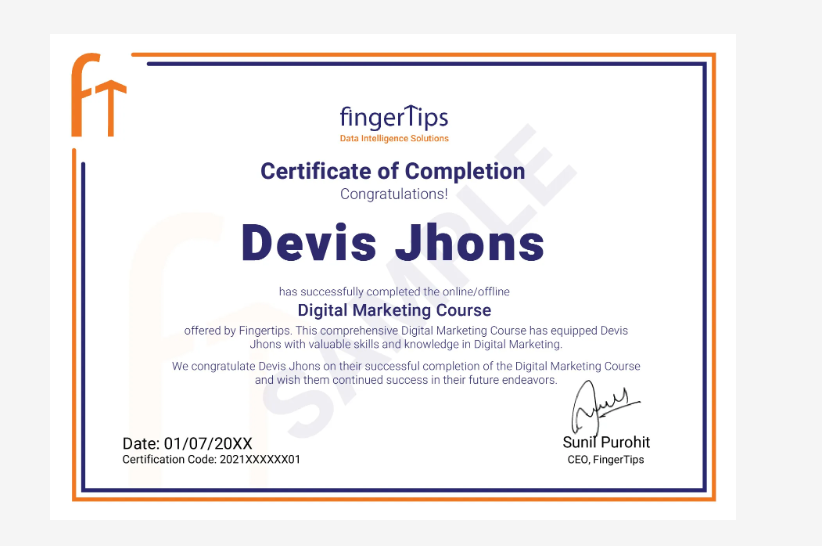Key Highlights
Let’s Begin Your Exciting Journey at Fingertips
- Definition & History
- Evolution from mainframes to modern cloud
- Key milestones in cloud development
- Benefits & Challenges
- Scalability, elasticity, cost-effectiveness
- Security, vendor lock-in, downtime risks
- Service Models
- IaaS: Compute, storage, networking
- PaaS: App services, database platforms
- SaaS: Web-based software (Google Workspace, Salesforce)
- Serverless: Event-driven execution, pricing model
- Deployment Models
- Public, Private, Hybrid, Community
- Multi-cloud strategy & use cases
- Data Center Components
- Compute, storage, networking layers
- Redundancy & high availability design
- Virtual Machines & Containers
- Hypervisors (Type 1 & Type 2)
- Docker basics: Images, Containers, Volumes
- Kubernetes: Pods, Services, Nodes, Clusters
- Serverless Architecture
- Comparison with traditional compute
- Event triggers, cold starts, runtime limits
- Compute & Storage Basics
- AWS EC2, Azure VMs, GCP Compute Engine
- AWS S3, Azure Blob, GCP Cloud Storage
- Hands-On Practice
- Creating free-tier accounts
- Launching & securing basic VM
- Uploading & accessing objects in cloud storage
- Networking Concepts
- Virtual networks (VPC, VNets)
- Subnets, route tables, NAT
- Load Balancers: Types & configuration
- Connectivity Options
- VPNs (Site-to-site, Client-to-site)
- VPC Peering & Interconnects
- Hybrid networking overview
- Storage Types
- Object Storage: S3, Cloud Storage features (versioning, lifecycle)
- Block Storage: EBS, Azure Disks
- Database Services
- Relational: AWS RDS, Azure SQL, Cloud SQL
- NoSQL: DynamoDB, Bigtable
- Backup & replication concepts
- IAM Basics
- Users, roles, policies
- Least privilege principle
- VM & Storage Security
- Key management (KMS)
- Security Groups, NSGs, ACLs
- Encryption at rest & in transit
- Compliance & Responsibility
- Shared responsibility model
- Basic cloud compliance (ISO, SOC, GDPR)
- Infrastructure as Code (IaC)
- CloudFormation: Templates & stacks
- Terraform: Providers, resources
- CI/CD Basics
- Pipelines: Build, test, deploy stages
- Tools: Jenkins, Azure DevOps, Cloud Build
- Monitoring Tools
- AWS CloudWatch, GCP Stackdriver, Azure Monitor
- Logging & Alerts
- Log groups, metrics, alerts
- Log aggregation & insights
- Cost Monitoring
- Billing dashboards
- Budgets, alerts, pricing calculators
- Serverless Compute
- AWS Lambda: Triggers, IAM
- Google Cloud Functions: HTTP/Event triggers
- Container Orchestration
- EKS, GKE: Clusters, deployment basics
- Fargate: Container without managing servers
- Real-World Deployment
- Setup: Networking, storage, compute
- Integration: Serverless functions or container services
- Documentation & Presentation
- Architecture diagram
- Cost estimation & scalability plan
- Terraform
- HCL basics, state files, modules
- Multi-cloud deployments
- Configuration Management
- Ansible Playbooks
- Puppet: Manifests, resources
- Advanced CI/CD
- Jenkins pipelines: Declarative vs scripted
- GitOps workflows (ArgoCD, Flux)
- Deployment Strategies
- Blue/Green, Canary, Rolling deployments
- Feature flags
- Shell Scripting
- Variables, loops, functions
- Automating backups, log rotation
- Cloud SDKs & CLI Tools
- AWS CLI commands
- Azure CLI scripting
- gcloud SDK for automation
- Deep Networking
- VPC Peering vs Transit Gateway
- DNS (Route 53, Cloud DNS)
- Network ACLs vs Security Groups
- Service Mesh (Istio basics)
- Cloud Databases
- Aurora Serverless, Firebase, Cosmos DB
- Data Lakes & Warehousing
- AWS Lake Formation
- Redshift vs BigQuery vs Synapse
- ETL Tools
- Glue, Dataflow, Azure Data Factory
- Microservices Architecture
- Stateless design, API-first approach
- Service Discovery & API Gateways
- AWS API Gateway, Cloud Endpoints
- Messaging & Event Systems
- SNS/SQS, Pub/Sub, EventBridge
- Security Posture Tools
- AWS Config, Security Hub
- Azure Security Center
- Key & Identity Management
- KMS, HSM
- Secrets Manager, Parameter Store
- WAF & Shield
- Web Application Firewall Rules
- DDoS Protection
- Cloud Cost Management
- Budgets, tagging strategy
- Rightsizing resources
- Governance Tools
- Control Tower, Landing Zone
- FinOps Introduction
- Migration Strategies
- Rehost (Lift & Shift), Refactor, Rearchitect
- Hybrid & Multi-cloud
- Anthos, Azure Arc, AWS Outposts
- Managing workloads across providers
- Final Project
- Complete cloud solution design
- Include security, cost, monitoring
- Certification Preparation
- AWS Certified Solutions Architect Associate
- Microsoft Azure Fundamentals / Admin
- Google Cloud Associate Engineer
Module 1:Introduction to Cloud Computing
- Definition & History
- Evolution from mainframes to modern cloud
- Key milestones in cloud development
- Benefits & Challenges
- Scalability, elasticity, cost-effectiveness
- Security, vendor lock-in, downtime risks
- Service Models
- IaaS: Compute, storage, networking
- PaaS: App services, database platforms
- SaaS: Web-based software (Google Workspace, Salesforce)
- Serverless: Event-driven execution, pricing model
- Deployment Models
- Public, Private, Hybrid, Community
- Multi-cloud strategy & use cases
Module 2 : Cloud Infrastructure & Virtualization
- Data Center Components
- Compute, storage, networking layers
- Redundancy & high availability design
- Virtual Machines & Containers
- Hypervisors (Type 1 & Type 2)
- Docker basics: Images, Containers, Volumes
- Kubernetes: Pods, Services, Nodes, Clusters
- Serverless Architecture
- Comparison with traditional compute
- Event triggers, cold starts, runtime limits
Module 3: Core Services on AWS / Azure / GCP
- Compute & Storage Basics
- AWS EC2, Azure VMs, GCP Compute Engine
- AWS S3, Azure Blob, GCP Cloud Storage
- Hands-On Practice
- Creating free-tier accounts
- Launching & securing basic VM
- Uploading & accessing objects in cloud storage
Module 4: Cloud Networking & Connectivity
- Networking Concepts
- Virtual networks (VPC, VNets)
- Subnets, route tables, NAT
- Load Balancers: Types & configuration
- Connectivity Options
- VPNs (Site-to-site, Client-to-site)
- VPC Peering & Interconnects
- Hybrid networking overview
Module 5: Cloud Storage & Databases
- Storage Types
- Object Storage: S3, Cloud Storage features (versioning, lifecycle)
- Block Storage: EBS, Azure Disks
- Database Services
- Relational: AWS RDS, Azure SQL, Cloud SQL
- NoSQL: DynamoDB, Bigtable
- Backup & replication concepts
Module 6: Cloud Security & IAM
- IAM Basics
- Users, roles, policies
- Least privilege principle
- VM & Storage Security
- Key management (KMS)
- Security Groups, NSGs, ACLs
- Encryption at rest & in transit
- Compliance & Responsibility
- Shared responsibility model
- Basic cloud compliance (ISO, SOC, GDPR)
Module 7: Deployment & DevOps Foundations
- Infrastructure as Code (IaC)
- CloudFormation: Templates & stacks
- Terraform: Providers, resources
- CI/CD Basics
- Pipelines: Build, test, deploy stages
- Tools: Jenkins, Azure DevOps, Cloud Build
Module 8: Monitoring & Management
- Monitoring Tools
- AWS CloudWatch, GCP Stackdriver, Azure Monitor
- Logging & Alerts
- Log groups, metrics, alerts
- Log aggregation & insights
- Cost Monitoring
- Billing dashboards
- Budgets, alerts, pricing calculators
Module 9: Serverless & Containers
- Serverless Compute
- AWS Lambda: Triggers, IAM
- Google Cloud Functions: HTTP/Event triggers
- Container Orchestration
- EKS, GKE: Clusters, deployment basics
- Fargate: Container without managing servers
Module 10: Final Project
- Real-World Deployment
- Setup: Networking, storage, compute
- Integration: Serverless functions or container services
- Documentation & Presentation
- Architecture diagram
- Cost estimation & scalability plan
Module 11: Infrastructure as Code In-depth
- Terraform
- HCL basics, state files, modules
- Multi-cloud deployments
- Configuration Management
- Ansible Playbooks
- Puppet: Manifests, resources
Module 12: DevOps & CI/CD
- Advanced CI/CD
- Jenkins pipelines: Declarative vs scripted
- GitOps workflows (ArgoCD, Flux)
- Deployment Strategies
- Blue/Green, Canary, Rolling deployments
- Feature flags
Module 13: Shell & Cloud SDKs
- Shell Scripting
- Variables, loops, functions
- Automating backups, log rotation
- Cloud SDKs & CLI Tools
- AWS CLI commands
- Azure CLI scripting
- gcloud SDK for automation
Module 14: Advanced Networking
- Deep Networking
- VPC Peering vs Transit Gateway
- DNS (Route 53, Cloud DNS)
- Network ACLs vs Security Groups
- Service Mesh (Istio basics)
Module 15: Data & Analytics Services
- Cloud Databases
- Aurora Serverless, Firebase, Cosmos DB
- Data Lakes & Warehousing
- AWS Lake Formation
- Redshift vs BigQuery vs Synapse
- ETL Tools
- Glue, Dataflow, Azure Data Factory
Module 16: Cloud-native Architectures
- Microservices Architecture
- Stateless design, API-first approach
- Service Discovery & API Gateways
- AWS API Gateway, Cloud Endpoints
- Messaging & Event Systems
- SNS/SQS, Pub/Sub, EventBridge
Module 17: Cloud Security Advanced
- Security Posture Tools
- AWS Config, Security Hub
- Azure Security Center
- Key & Identity Management
- KMS, HSM
- Secrets Manager, Parameter Store
- WAF & Shield
- Web Application Firewall Rules
- DDoS Protection
Module 18: Cost Optimization & Governance
- Cloud Cost Management
- Budgets, tagging strategy
- Rightsizing resources
- Governance Tools
- Control Tower, Landing Zone
- FinOps Introduction
Module 19: Multi/Hybrid Cloud Patterns
- Migration Strategies
- Rehost (Lift & Shift), Refactor, Rearchitect
- Hybrid & Multi-cloud
- Anthos, Azure Arc, AWS Outposts
- Managing workloads across providers
Module 20: Capstone Project & Certification Prep
- Final Project
- Complete cloud solution design
- Include security, cost, monitoring
- Certification Preparation
- AWS Certified Solutions Architect Associate
- Microsoft Azure Fundamentals / Admin
- Google Cloud Associate Engineer
- The 7 Cs of Effective Business Communication
- Communication English
- Grammar Mastery: Tenses, Adjectives, and Verbs
- Body Language & Modals
- Ace Your Business Presentations
- Effective Email Writing
- Telephonic Communication and Business Vocab
- Networking and Interpersonal Skills Development
- Resume Building
- LinkedIn Profile Creation
- Profile Building
- Interview Best Practice
- Technical interview
- 10+ Mock Analytic Interviews
- HR interview
- 10+ Mock Commination Interviews
- Company-Specific Interview Guides
- Several Coding Challanges
- Industry Specific Projects on Python, Machine Learning, and data Analytics
- Work on Real World Datasets
- 50+ Assignments
- The 7 Cs of Effective Business Communication
- Communication English
- Grammar Mastery: Tenses, Adjectives, and Verbs
- Body Language & Modals
- Ace Your Business Presentations
- Effective Email Writing
- Telephonic Communication and Business Vocab
- Networking and Interpersonal Skills Development
- Resume Building
- LinkedIn Profile Creation
- Profile Building
- Interview Best Practice
- Technical interview
- 10+ Mock Analytic Interviews
- HR interview
- 10+ Mock Commination Interviews
- Company-Specific Interview Guides
- Several Coding Challanges
- Industry Specific Projects on Python, Machine Learning, and data Analytics
- Work on Real World Datasets
- 50+ Assignments


























Why Choose Fingertips?
Top-Quality Training: Led by certified cyber security professionals
Hands-on Projects: Work on real-world scenarios and penetration testing labs
Placement Support: Dedicated career guidance till you get placed
Industry-Recognized Certification
Lifetime LMS Access

Who can apply for this course?
Students who are in the final year of graduation or post-graduation.
Recent Graduates who want to pursue a career in the field of Digital Marketing.
Professionals Who are looking at building a career in Digital Marketing.
Get Certified with Fingertips
Certificate
Upon completing this program, you will be granted a certificate of completion from Fingertips.
Credible
It validates the expertise of over 15,000 learners in the field, boosting your credibility and giving a competitive edge in the job market, and opening doors to lucrative career opportunities.
Shareable
Leverage the power of your certificate by showcasing it on LinkedIn and job hosting platforms, unlocking exciting recruitment prospects with renowned companies.
We have partnered with the following financing companies to provide no-cost EMI and competitive finance options with no hidden costs.


- Learn From The Industry Experts
- Generative Ai Curriculum
- 10+ Tools & Techniques
- 100% Job Assistance
We have partnered with the following financing companies to provide no-cost EMI and competitive finance options with no hidden costs.


We have partnered with the following financing companies to provide no-cost EMI and competitive finance options with no hidden costs.


- Learn From The Industry Experts
- Generative Ai Curriculum
- 10+ Tools & Techniques
- 100% Job Assistance
We have partnered with the following financing companies to provide no-cost EMI and competitive finance options with no hidden costs.









